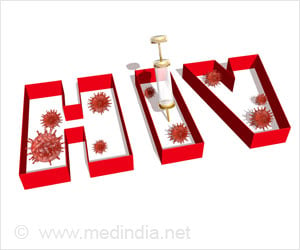- Human immunodeficiency virus (HIV) causes infections that could result in AIDS.
- Scientists have found a new HIV vaccine design that could mimic the HIV subtype C viral protein.
- Immunogen identified could be combined with a vaccine that could combat different strains of HIV.
The research study published in the journal Immunity alongside another study at Karolinska Institute in Stockholm showed that the new vaccine candidate developed could elicit neutralizing antibodies in non-human primates.
The studies were able to show how structure-based immunogen design can advance vaccine development.
Effective HIV Vaccine
Human immunodeficiency virus (HIV) infections are of various types. The mutations were found to occur rapidly. Out of the different strains that cause HIV infections, the research team tends to focus on common threats like Clades A, B and C.
An effective HIV vaccine is needed to protect against multiple strains. The research team is designing a set of immunogens so that the immune systems can work against the antigen.
The new research studied the Clade C glycoprotein and enabled the immune system to fight Clade C viruses.
"Clade C HIV strains are responsible for the majority of infections worldwide."
Clade C glycoprotein
The Clade C HIV strain that is responsible for infections is unstable, and the molecules are capable of falling apart.
Guenaga required the molecules to stay together as a trimer so that Fernando Garces would get a clear image of the clade C glycoprotein’s trimeric structure.
In order to solve the problem, scientists re-engineered the glycoprotein and strengthened the interactions between the molecules to get a soluble molecule that would assemble as it is on the viral surface.
Garces said, "Despite all the engineering employed to produce a stable clade C protein, these crystals (of clade C protein) were grown in very challenging conditions at 4 degrees Celsius and it took the diffraction of multiple crystals to generate a complete dataset, as they showed high sensitivity to radiation damage."
"Altogether, this highlights the tremendous effort made by the team in order to make available the molecular architecture of this very important immunogen."
The research team took a high-resolution image of the glycoprotein using x-ray crystallography technique.
Promising Vaccine Candidate
Based on the research findings, the research team tested an immunogen that was engineered to appear on the large molecule called a liposome that could create a mimic of the virus.
The newly designed vaccine candidate could prompt the immune system to produce antibodies that are capable of neutralizing Clade C HIV strain when tested in non-human primates.
Guenaga said, "That was great to see."
"This study showed that the immunogens we made are not artificial molecules--these are actually relevant for protecting against HIV in the real world."
Source-Medindia
















